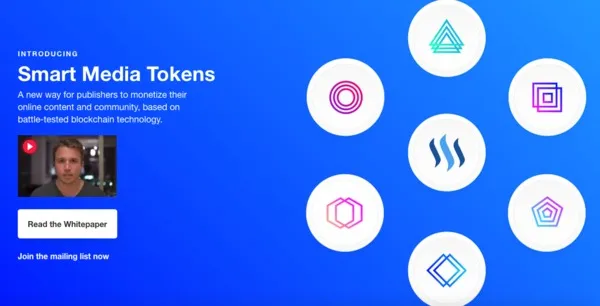
Bitcoin Market Journal has been sharing content with the Steemit community since January 2018, and in that time, we have noticed that many commenters on our posts ask for plain-English explanations of how Steem itself works. Here, then, is a plain-English explanation of Steem's whitepaper, which we hope will help both current Steemians and those looking to become Steemians in the near future.
The Rise of Steem
In the two years that Steemit has been in existence, the blockchain-based social media and blogging platform has proven its popularity by moving into the top 2000 websites currently in existence. As a website that has been around for a relatively short amount of time, this is no small feat. Following its success, its creators seek to use the lessons learned from the incentive model within Steemit to implement a new token that will help content creators generate an income without involving any third parties.
Social media tokens are "a native digital asset on the Steem blockchain that can be quickly launched by anyone to help monetize online content and create incentives to encourage desired user behavior." Simply put, these are tokens created within the Steem blockchain and are designed to help publishers build communities that are financially beneficial to all participants within the ecosystem. These economic incentives are especially useful when it comes to spurring the growth of a platform.
As is the case with the tokens within the Steemit network, SMTs are set to feature near-instant settlement as well as zero transaction fees. Moreover, they are similar to Ethereum's ERC20 tokens. However, they carry a built-in feature known as "Proof-of-Brain" which facilitates the creation and implementation of a reward system that is specifically designed for digital content businesses.

What Is "Proof-of-Brain?"
As is explained in the whitepaper, proof-of-brain is a combination of two factors that confirm a creator's intellectual contribution to existing content, thereby allowing him or her to lay claim to any financial rewards that arise. Moreover, rewards are also available for users who interact with said content through the provision of feedback.
Two unique properties align incentives and make SMTs "smart and social" compared to other tokens (such as bitcoin, Ether, and ERC-20s). The first is a pool of tokens dedicated to incentivizing content creation and curation (called the "rewards pool"). The second is a voting system that leverages the wisdom of the crowd to assess the value of content and distribute tokens to it. These two unique properties when combined are referred to as Proof-of-Brain.
The proof-of-brain algorithm encourages creators to publish and curate content. These tokens can be distributed through upvoting or liking content. In addition, creators are able to easily launch an ICO with the aim of supporting their project, without having to deal with the technological aspects of launching a new cryptocurrency.
Steem and Third-Party Sites
It is also possible to integrate SMTs into third-party websites through the APIs provided. Due to the economic incentive held therein, website owners can jump-start growth for their sites. Moreover, SMTs seek to provide an avenue for financial compensation for those who participate in a substantial amount of discourse online through the distribution of rewards generated via a blockchain-enabled pool. "This model also creates a business opportunity for developers who want to build the next generation of crypto-enabled Disqus-like companies."
It remains to be seen how successful SMTs will become, but if the token experiences substantial uptake beyond Steemit's own platform, it has the potential to become the go-to incentivized social media payment currency. That would be a rosy future, indeed!
If you want to learn more about altcoins such as Steem and get plain-English explanations of New Finance concepts, read Bitcoin Market Journal and learn to invest like a pro!